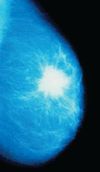1.7 Medical Imaging Flashcards
(32 cards)
techniques and procedures used to create images of the human body
Medical imaging
techniques and procedures used to create images of the human body
Medical Imaging
The grandparent of all medical imaging techniques is
Radiography
Which imaging technique uses A single barrage of x-rays passes through the body, producing an image of interior structures on x-ray–sensitive film.
Radiography
Which technique is useful for examining soft tissue?
Mammography
Which technique is used to determine bone density?
Bone densitometry or DEXA scan
Substance used to make hollow or fluid-filled structures visible (appear white)
Contrast medium
Contrast xrays are used to image blood vessels. This is called a/an
Angiography
Contrast xrays are used to image the urinary system
Intravenous urography
Contrast xrays used to image the gastrointestinal tract is called a/an
Barium contrast xray
The grandparent of all medical imaging techniques is
conventional radiography (x-rays)
A single barrage of x-rays passes through the body, producing an image of interior structures on x-ray–sensitive film.
Radiography
useful for examining soft tissues such as the breast (mammography) and for determining bone density (bone densitometry or DEXA scan).
radiography
It is necessary to use a substance called a ___ to make hollow or fluid-filled structures visible (appear white) in radiographs.
contrast medium
used to image blood vessels
angiography
used to image the urinary system
intravenous urography
used to image gastrointestinal tract
(barium contrast x-ray)
Which imaging techniques is used here?

Angiography
What type of scan is used here?

Bone densitometry
_______ of female breast showing cancerous tumor (white mass with uneven border)

Mammogram
What type of imaging technique is used here?

Radiography
This is a _____ showing kidney stone (arrow) in right kidney.

Intravenous urogram
_____ showing cancer of the ascending colon. (Which imaging technique)

Barium contrast xray



